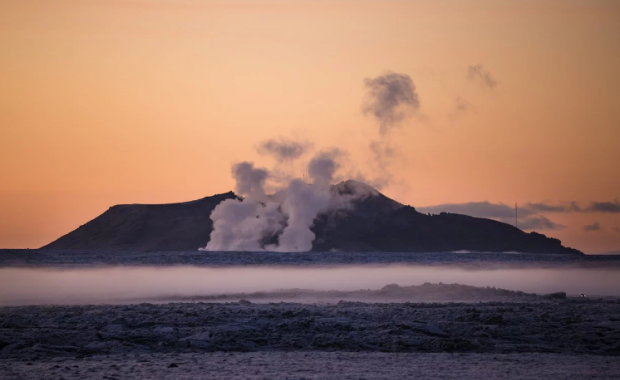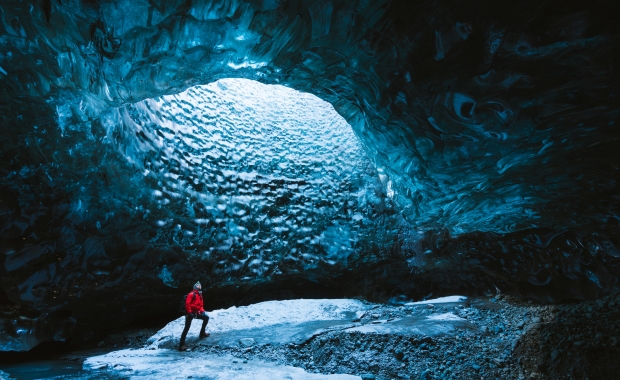The greatest threat facing the Hornstrandir Nature Preserve is uncontrolled expansion of tourism argues a park ranger in the preserve. Rangers are too few and far in between to offer effective policing of the preserve. He fears that visitors threaten the habitat of the Arctic fox in the preserve. 90% of the world population of the Arctic fox lives in Iceland. Hornstrandir nature preserve is the most important habitat of the foxes in Iceland.
Read more: Hornstrandir: Where the Arctic Fox reigns supreme
Jón Smári Jónsson, nature guard in the Hornstrandir Nature Preserve, argues in an interview published on the website of the Icelandic Environment Agencey that large numbers of visitors disrupt the tranquility of Hornstrandir, while at the same time putting stress on the delicate vegetation and natural formations. He stresses that the vast majority of visitors behave in a respectful manner.
Visitors to Hornstrandir also seem to be better behaved now than they were several years ago, but at the same time the numbers have grown. It is unrestrained growth and uncontrolled tourism can easily cause problems.
He is particularly concerned that large numbers of travellers can upset the breeding of Arctic foxes.
The area has a very delicate ecosystem. The foxes are protected, and we Icelanders have a special moral duty to protect animal populations which make up a significant portion of the total world population. The Scandinavian Arctic Fox is endangered outside of Svalbard and Iceland is home to 90% of the total Scandinavian population. When one country is home to such a significant portion of the population it is crucial that the animal is ensured a habitat and Hornstrandir are a crucial part of this habitat.
He worries that unrestrained tourism can cause disruption during the foxes' breeding season. He is particularly concerned that photography tours, which are specifically organized to capture photos of the pups in early spring could threaten the foxes.
We can't let everyone in
Jón Smári argues that the reason for the growing popularity of Hornstrandir is that untouched areas are rapidly disappearing at the same time as people are increasingly searching for tranquility and a connection to nature. But there are limits to how much tourism a place like Hornstrandir can take before it loses its value. We want to educate people about Hornstrandir, but we can't let everyone into the area.
The greatest threat facing the Hornstrandir Nature Preserve is uncontrolled expansion of tourism argues a park ranger in the preserve. Rangers are too few and far in between to offer effective policing of the preserve. He fears that visitors threaten the habitat of the Arctic fox in the preserve. 90% of the world population of the Arctic fox lives in Iceland. Hornstrandir nature preserve is the most important habitat of the foxes in Iceland.
Read more: Hornstrandir: Where the Arctic Fox reigns supreme
Jón Smári Jónsson, nature guard in the Hornstrandir Nature Preserve, argues in an interview published on the website of the Icelandic Environment Agencey that large numbers of visitors disrupt the tranquility of Hornstrandir, while at the same time putting stress on the delicate vegetation and natural formations. He stresses that the vast majority of visitors behave in a respectful manner.
Visitors to Hornstrandir also seem to be better behaved now than they were several years ago, but at the same time the numbers have grown. It is unrestrained growth and uncontrolled tourism can easily cause problems.
He is particularly concerned that large numbers of travellers can upset the breeding of Arctic foxes.
The area has a very delicate ecosystem. The foxes are protected, and we Icelanders have a special moral duty to protect animal populations which make up a significant portion of the total world population. The Scandinavian Arctic Fox is endangered outside of Svalbard and Iceland is home to 90% of the total Scandinavian population. When one country is home to such a significant portion of the population it is crucial that the animal is ensured a habitat and Hornstrandir are a crucial part of this habitat.
He worries that unrestrained tourism can cause disruption during the foxes' breeding season. He is particularly concerned that photography tours, which are specifically organized to capture photos of the pups in early spring could threaten the foxes.
We can't let everyone in
Jón Smári argues that the reason for the growing popularity of Hornstrandir is that untouched areas are rapidly disappearing at the same time as people are increasingly searching for tranquility and a connection to nature. But there are limits to how much tourism a place like Hornstrandir can take before it loses its value. We want to educate people about Hornstrandir, but we can't let everyone into the area.







